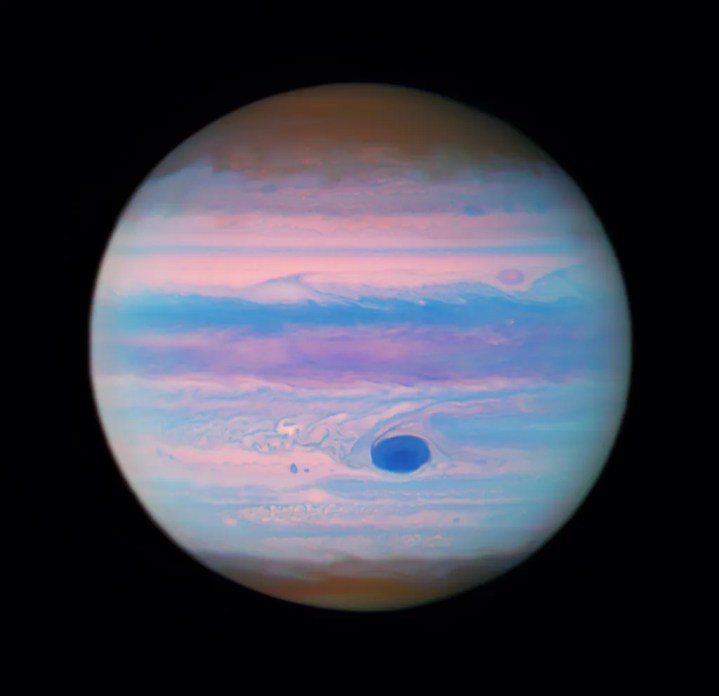You can now see Jupiter in a whole new way, thanks to a new image from the Hubble Space Telescope. Showing the planet in the ultraviolet wavelength, the image highlights the planet’s Great Red Spot — an enormous storm larger than the width of the entire Earth that has been raging for hundreds of years.
The image was released in celebration of Jupiter reaching opposition, meaning it is directly opposite the sun as viewed from the Earth. That means that if you are a keen stargazer, now is a great time to go and look for Jupiter in the night sky as it will look its biggest and brightest.

The Hubble Space Telescope looks mostly in the optical light wavelength, which is the same as the human eye can see. But it also has the ability to go beyond this range, both a little bit into the infrared and, in this case, into the ultraviolet. Looking at different wavelengths allows scientists to see different features of cosmic objects like planets and galaxies.
The James Webb Space Telescope, for example, looks in the infrared to observe extremely distant galaxies that are traveling away from us and, as a result. have light that is shifted into the infrared via a process called redshift. The infrared is also useful for being able to look through clouds of dust.
Looking in the ultraviolet wavelength, on the other hand, is useful for observing objects like very young, very hot stars, or looking at the sparse gas and dust floating between stars, called the interstellar medium.
In this case, the view Hubble has of Jupiter is part of a project to study its turbulent atmosphere, looking particularly at its superstorm, the Great Red Spot. The different wavelengths of ultraviolet light are translated into the visible light spectrum to give this color effect.
“Though the storm appears red to the human eye, in this ultraviolet image, it appears darker because high-altitude haze particles absorb light at these wavelengths,” NASA explains in a statement. “The reddish, wavy polar hazes are absorbing slightly less of this light due to differences in either particle size, composition, or altitude.”
Editors' Recommendations
- James Webb captures the edge of the beautiful Horsehead Nebula
- Hubble discovers over 1,000 new asteroids thanks to photobombing
- The first views of the eclipse are coming in, and they’re stunning
- James Webb images capture the galactic winds of newborn stars
- Stunning image shows the magnetic fields of our galaxy’s supermassive black hole



